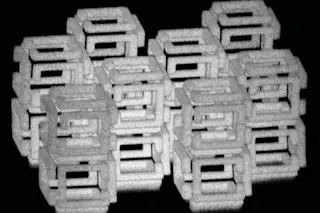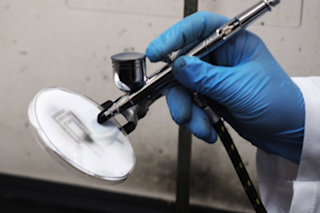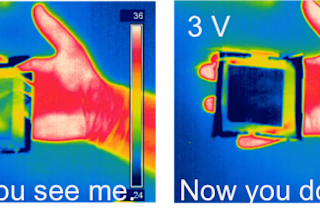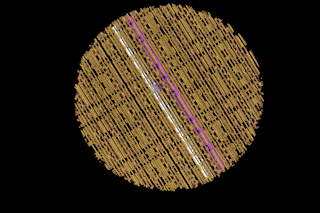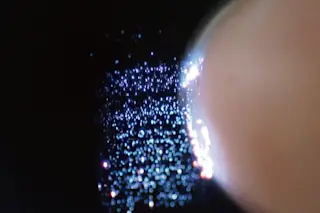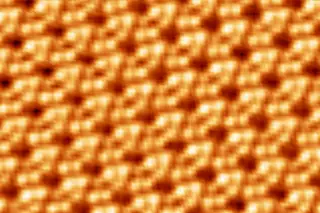Nanotechnology has become shorthand for gee-whiz miniature devices that may never find practical uses. At Rice University in Texas, however, tiny constructions called nanoshells have shown promise for fighting cancer and administering drugs. The devices are simple enough: beads about three millionths of an inch wide, with an outer metal wall and an inner silicon core. But by varying the size ratio between wall and core, electrical and computer engineer Naomi Halas and her Rice colleagues can tune the shells precisely to absorb or scatter specific wavelengths of light. "Small particles of gold absorb green light very strongly and look red," says Halas. "It's partly because of the metal and partly because of the shape, so we're controlling the shells' color by changing the shape."
Growth process of a nanoshell, as captured by an electron microscope.Photograph courtesy of Rice University
Working with Rice bioengineer Jennifer West, Halas found she could ...



